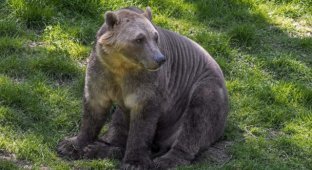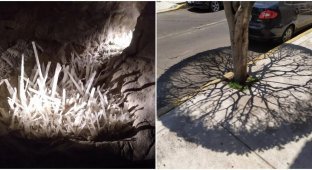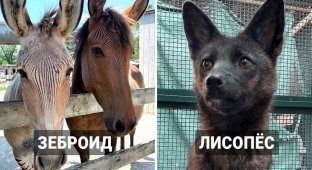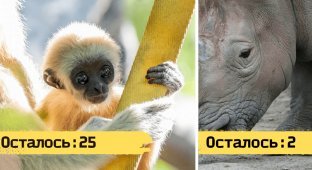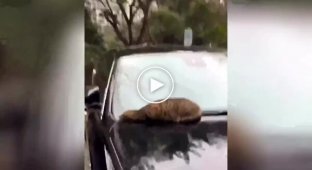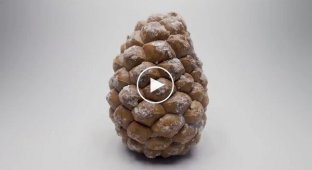From beetles to lemurs: 8 unexpected pollinators that are not bees (9 photos)
When we talk about pollination, bees, butterflies and perhaps even the charming hummingbirds immediately come to mind. But in fact, there are much more unusual "pollen couriers" in nature - from tiny lizards to bats. 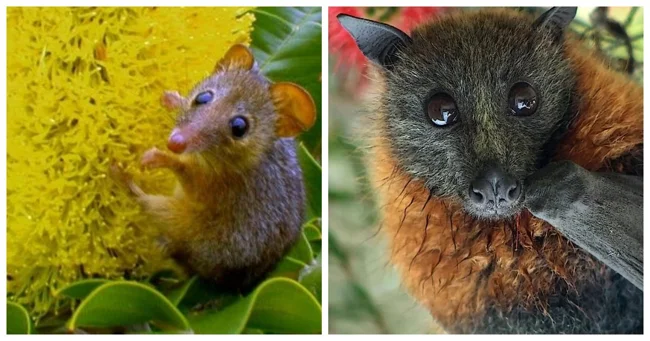
Without these hard workers, most plants (and perhaps you and me) simply would not survive. Who are these heroic pollinators?
1. Pollinator Lemur - a Furry Giant with Pollen on Its Face 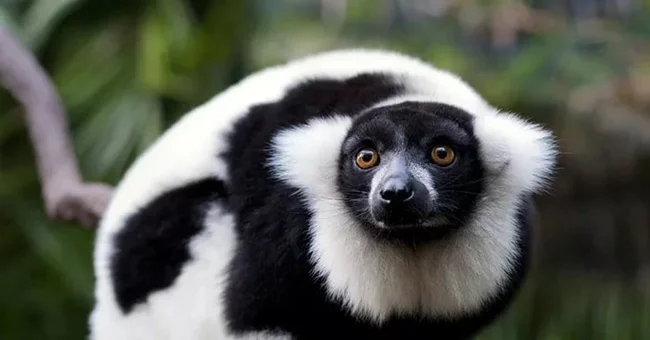
The black-and-white or collared ruffed lemur is the largest pollinator on the planet. The lemur feasts on the nectar of the Madagascar Ravenala - the traveler's tree, sticking its face into the flower. The pollen sticks to its fur and is transferred to the next flowers.
The plant itself is "sharpened" for such guests: its strong leaves are difficult to push apart, and there is enough nectar to feed even a large animal. Without lemurs, these plants cannot reproduce. This is an ideal example of an evolutionary tandem.
2. Honey Possum: A Tiny Pollinator with Superpowers 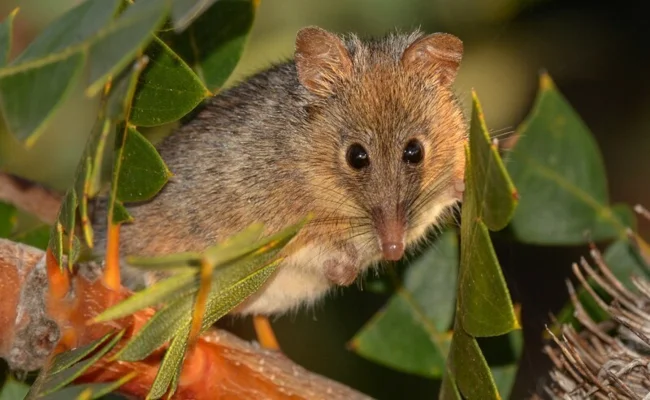
The proboscis possum or honey possum is almost the size of a thimble (only 7-9 cm) and is the only mammal in the world that feeds only on nectar.
A long tongue allows this Australian animal to easily extract nectar from eucalyptus and banksia trees. Thanks to its prehensile tail, it hangs on branches like a monkey while it feasts. And after lunch, it transfers pollen to new flowers, saving entire forests.
3. Pollinating lizards: unexpected flower saviors 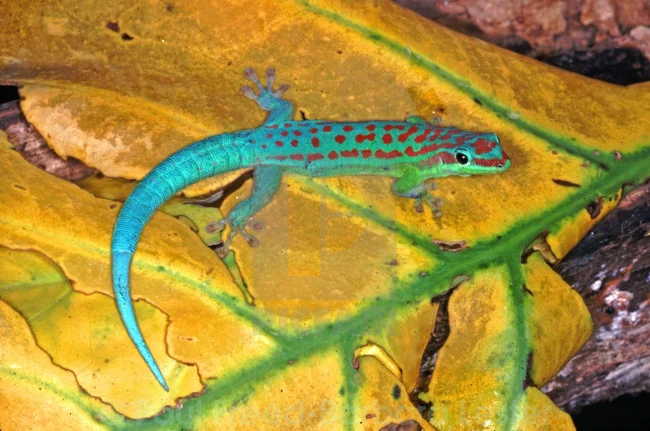
Scaly ones also work as postmen for plants. Skinks from Noronha Island (Brazil) pollinate mulungu - without them, these trees will not survive. And blue-tailed day geckos are the only ones who transfer pollen from the rare trochetia flower on Mauritius.
On islands where there are few insects, it is lizards that become the main pollinators. While they feast on nectar, pollen sticks to their faces and paws — and now an entire plant species is saved.
4. Rainbow Lorikeet: A Feathered Artist-Pollinator 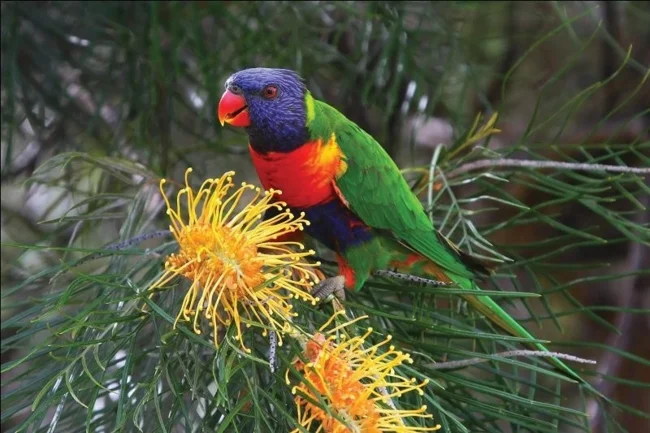
Imagine a parrot that doesn’t just show off in the foliage, but saves entire ecosystems. The Rainbow Lorikeet works as a humble pollen courier for Australian and Indonesian flowers.
Its special tongue with microscopic brushes (papillae) is ideal for sucking out every last drop of nectar. When a lorikeet dives into a flower, pollen settles on its forehead and neck, and then travels to new plants.
These parrots are not just beautiful gluttons, but key pollinators for many species that cannot survive without them.
5. Genet: A Sweet-Toothed Predator on a Secret Mission 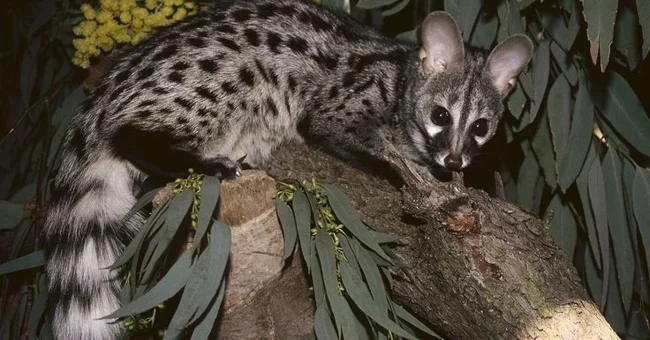
This cute spotted ferret from Africa secretly helps flowers. Genets and mongooses sometimes feast on protea (sugar bush) flowers, carrying pollen along the way. The animals rarely visit plants, but they carry pollen over huge distances.
Even random visitors like genets are natural couriers, helping plants avoid degeneration.
6. Bats: Night Gardeners with Superpowers 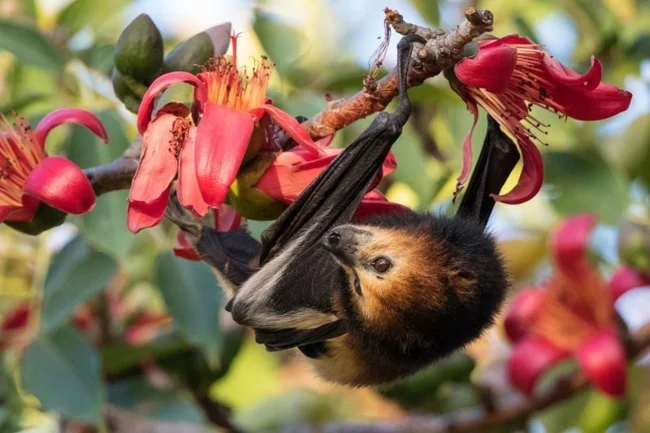
Who said that pollination is only a daytime job? Creatures of the night are also actively involved in this process. The tube-lipped nectar bat is the champion in tongue length (relative to its body) among mammals. Its 8-centimeter tongue extracts nectar from the narrowest flowers.
And flying foxes are the only pollinators for many tropical plants, including eucalyptus and rare jungle species. Some plants, such as agave (the same one they make tequila from), are completely dependent on mice: their flowers open at night and smell like... rotten fruit to attract winged guests.
7. Pollinating Beetles: Ancient Masters of Their Craft 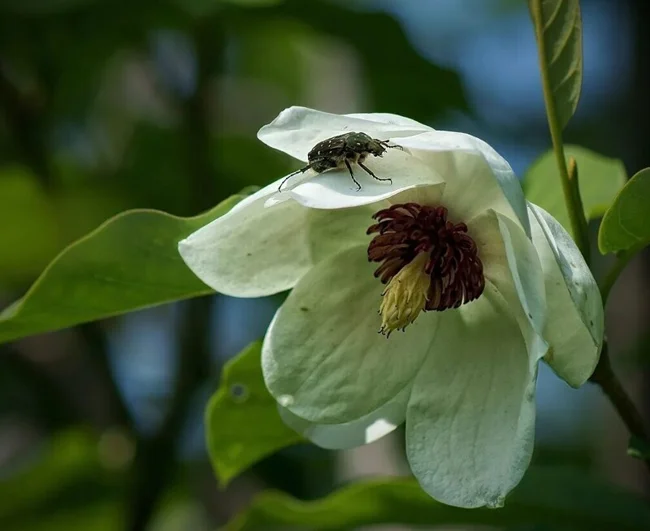
They worked with flowers even when dinosaurs roamed the Earth. Beetles began "collaborating" with flowers 200 million years ago, long before bees and butterflies. They still love magnolias and water lilies, which have hardly changed since the time of the dinosaurs.
There is a special category of plants that are pollinated only by beetles. They are called cantharophilous. If it weren't for beetles, we would never see magnolias blooming. So these guys are literally living fossils among pollinators.
8. Feathered Pollinators: Not Just Hummingbirds 
While hummingbirds steal the show, their colleagues around the world work just as hard and diligently. Who's on the team? There are many. These are sunbirds (Africa, Asia) - bright as jewels, and just as important for flowers, honeyeaters (Australia), whose beaks are ideal for bottle-shaped flowers, Hawaiian flowerpeckers - endemics that pollinate rare island plants.
Without birds, there would be no bananas, papayas, or nutmeg. Birds are the main gardeners of wild flowers and in some cases support entire ecosystems. There are about 2,000 species of birds in the world that participate in pollination in one way or another.













